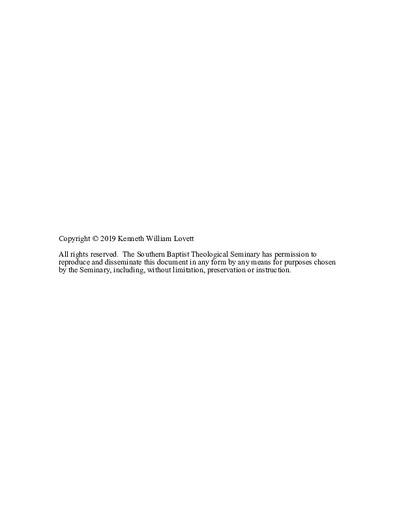| dc.description.abstract | This dissertation demonstrates that the sea is consistently a negative motif in the OT. Chapter 2 introduces Hermann Gunkel because he wrote the foundational work on the topic of the chaotic sea in the OT. He argued that Babylonian myth lies in the background of the OT passages that are negative about the sea. Chapter 3 brings into the conversation the rest of the major contributors in the history of scholarship on the sea in the OT. Many of them, like Gunkel, have relied heavily on the ANE myths, although some have dissented and demonstrated that the OT does not use ANE myths as a source. Chapter 4 recounts the relavent ANE myths to show that they are negative about the sea like the OT, but the chapter also includes cautions about what that does and does not mean for OT studies. There are many other ancient myths from around the world (outside of the ANE) that present the sea negatively, which are introduced in chapter 5. Therefore, negativity about the sea is common in the ancient world. Chapter 6 shows that within the text of the OT itself, the sea is consistently a negative motif. The sea is a negative motif because it is the un-creator. Although a part of God’s creation, it is posited against creation in its destructive and uncontrollable nature. The sea is also a negative motif because of its consistent involvement in killing and destroying when God uses the sea as a tool of judgment against sin. Because of its consistent use as a tool of judgment, it gains a negative reputation in the biblical text. The sea is also the home of the enemy, Satan, who is represented by Leviathan and other beasts that come out of the sea in Daniel’s eschatological vision. Finally, the sea is a negative motif in the OT because it is the place of death and darkness. Death, darkness, and the deep intersect in texts that are thick with negativity and anticipate Revelation 21–22, where John declares that all three “will be no more” in the new creation. | en_US |

